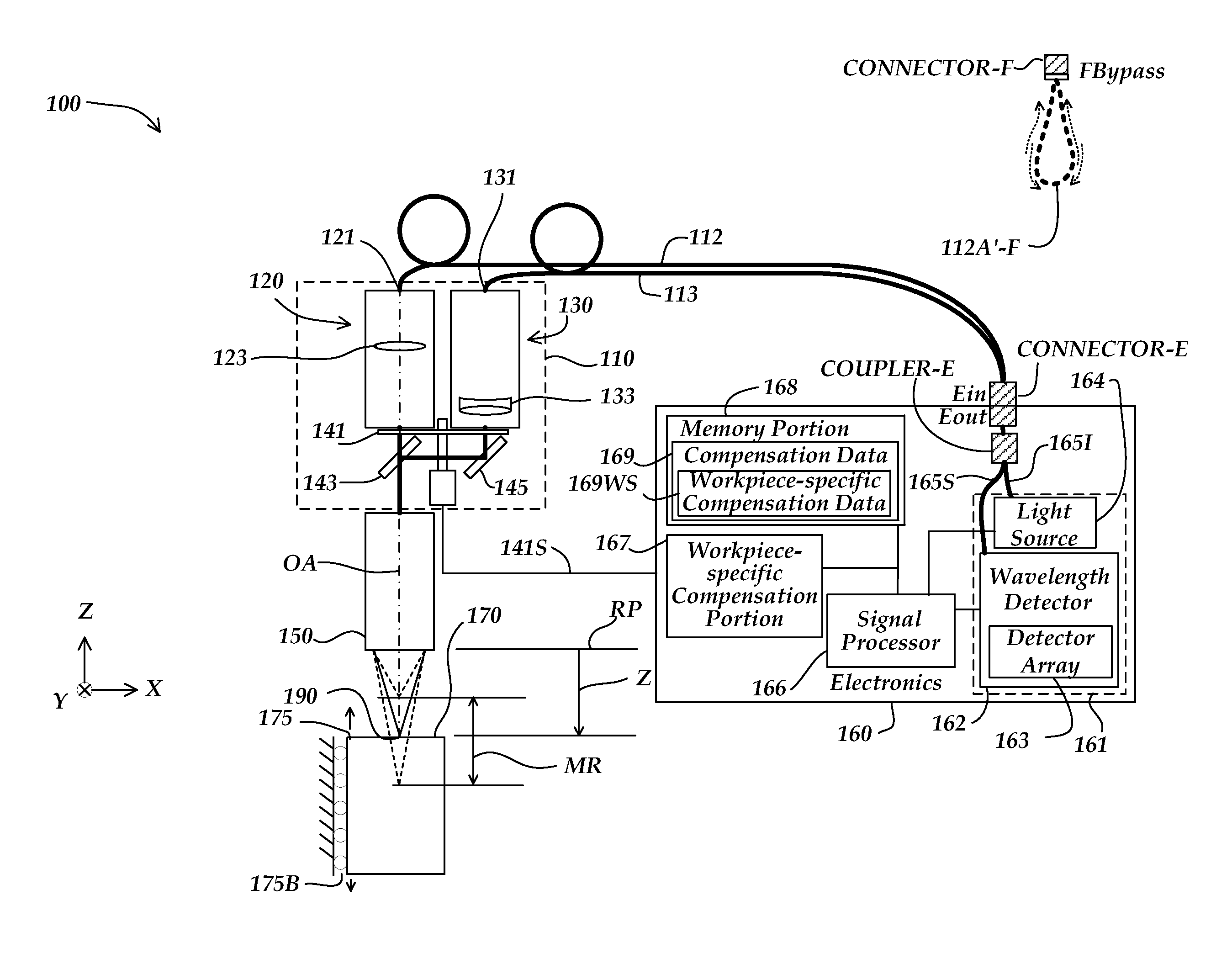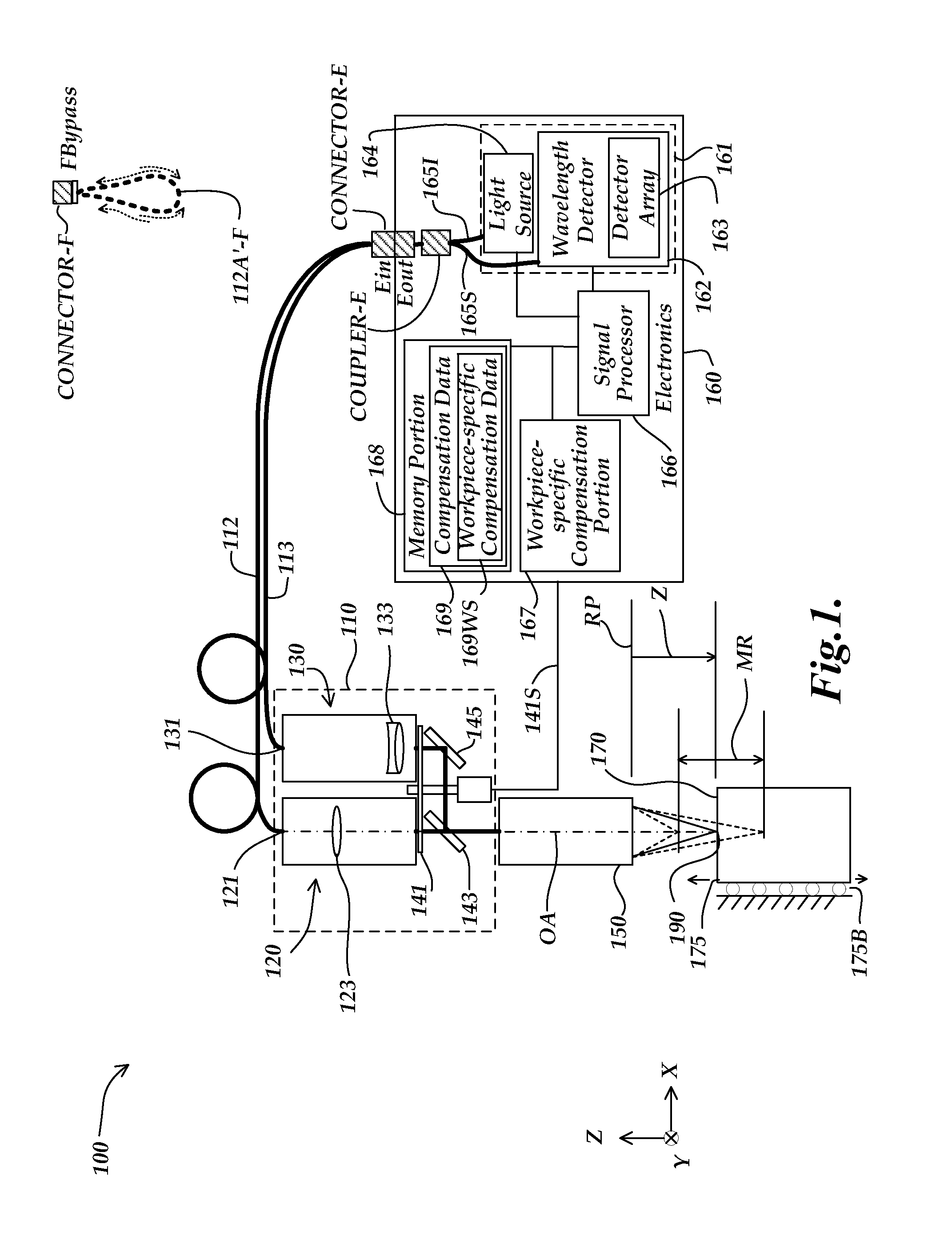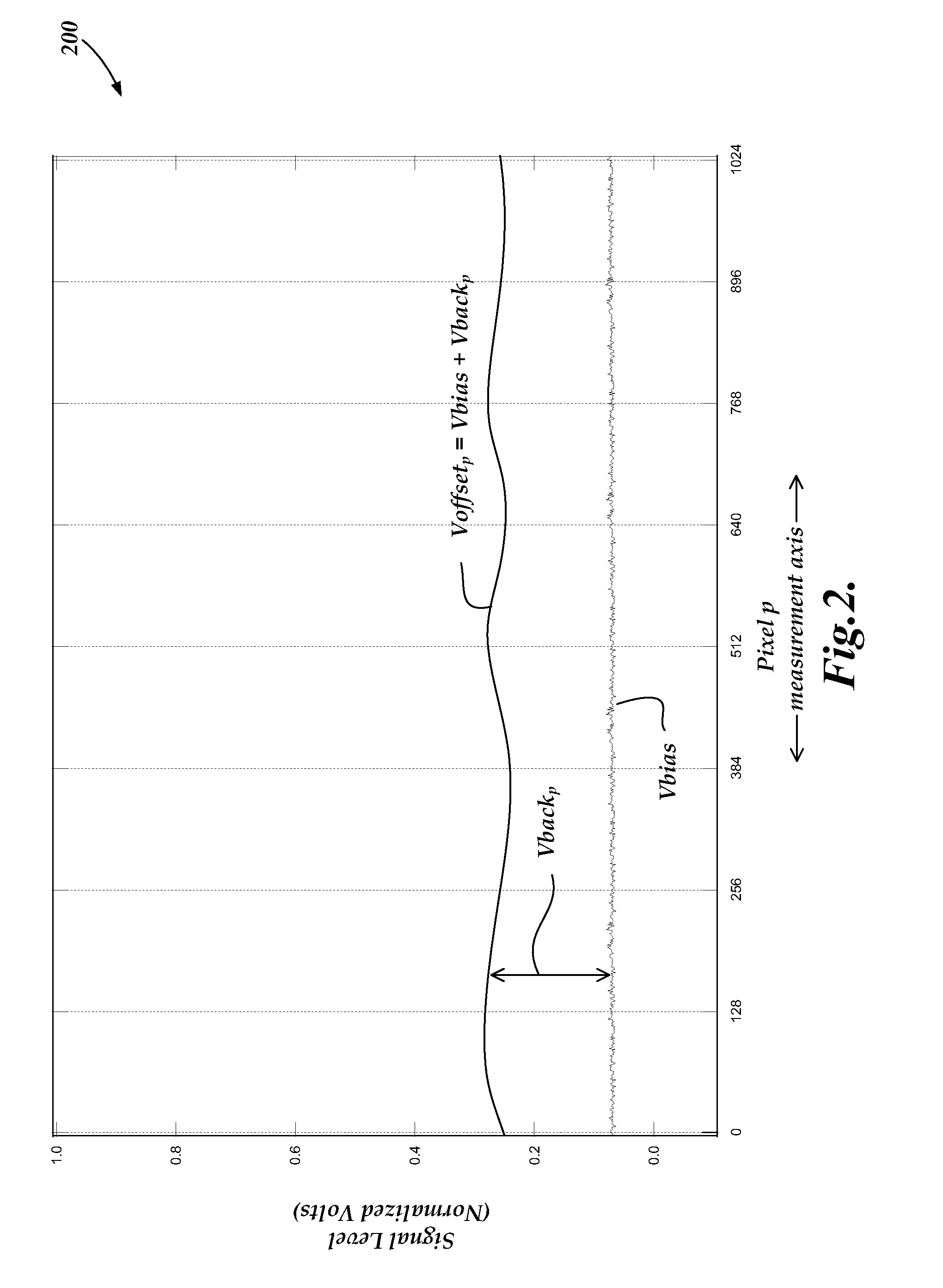Chromatic point sensor configuration including real time spectrum compensation
- Summary
- Abstract
- Description
- Claims
- Application Information
AI Technical Summary
Benefits of technology
Problems solved by technology
Method used
Image
Examples
Embodiment Construction
[0036]FIG. 1 is a block diagram of a first exemplary embodiment of a chromatic point sensor (CPS) system 100. As shown in FIG. 1, the chromatic point sensor system 100 includes a dual path optical portion 110, a switching element 141 and an electronics portion 160 which comprises a source+detector subsystem 161 and a light source 140. The dual path optical portion 110 comprises a first confocal optical path 120 and a second optical path 130. The first confocal optical path 120 comprises a chromatically dispersive optical element 123. The second optical path 130 comprises a non dispersive optical element 133. In some embodiments, the non dispersive optical element 133 may comprise an achromat.
[0037]The source+detector subsystem 161 comprises a wavelength detector 162, the CPS wavelength detector 162 comprising a plurality of pixels distributed along a measurement axis of the CPS wavelength detector 162, the plurality of pixels receiving respective wavelengths and providing output spe...
PUM
 Login to view more
Login to view more Abstract
Description
Claims
Application Information
 Login to view more
Login to view more - R&D Engineer
- R&D Manager
- IP Professional
- Industry Leading Data Capabilities
- Powerful AI technology
- Patent DNA Extraction
Browse by: Latest US Patents, China's latest patents, Technical Efficacy Thesaurus, Application Domain, Technology Topic.
© 2024 PatSnap. All rights reserved.Legal|Privacy policy|Modern Slavery Act Transparency Statement|Sitemap



